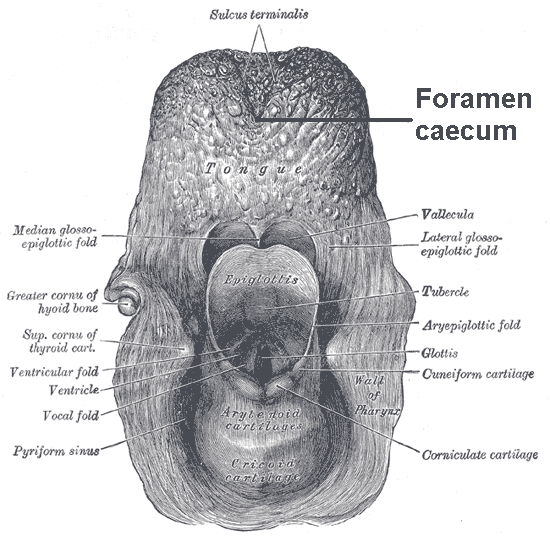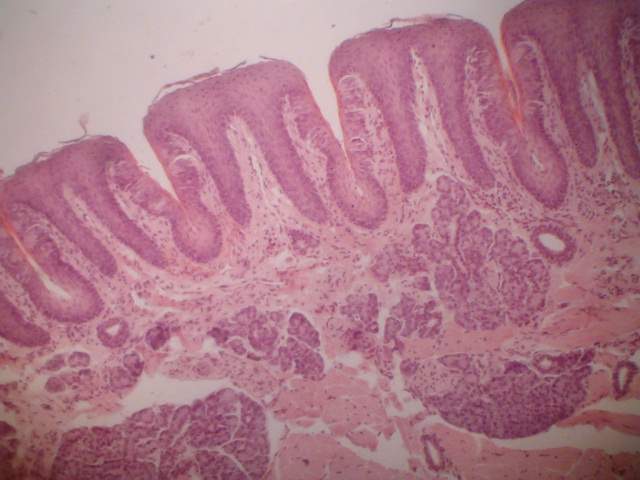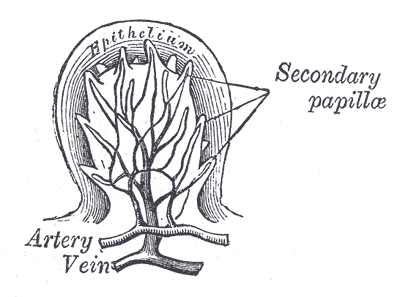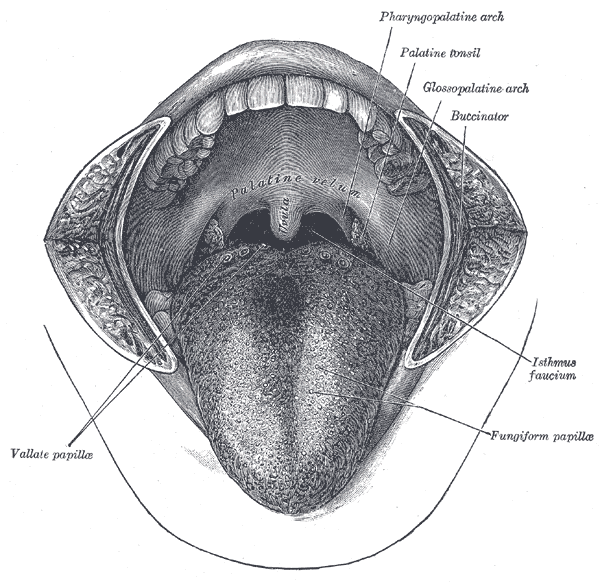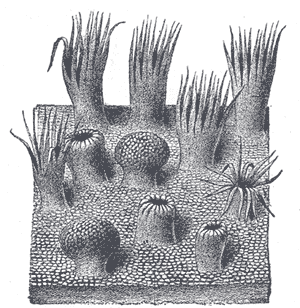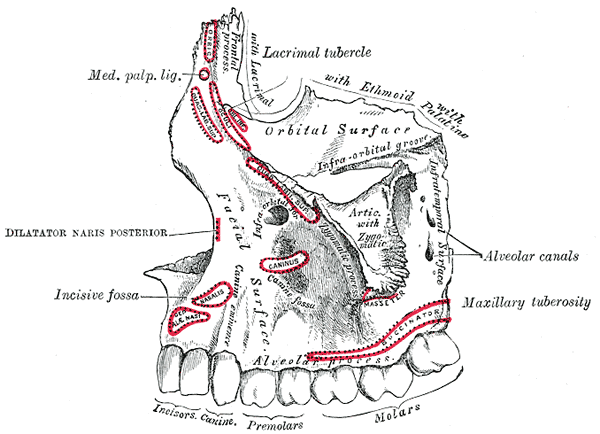We just learned about the Fimbriated Fold.
Another part of the mouth is the Sublingual Caruncle.
Sublingual means "underneath the tongue", and caruncle means some skin sticking out like a bump.
Remember the frenulum is the piece of skin under the tongue that holds it in place.
On each side of the frenulum is a little bump.
That bump is the sublingual caruncle, and it is where most of the saliva or spit in your mouth comes out of.

(from: wikipedia - submandibular gland)
Kid Facts - Blast from the past: Distal Intertarsal Ligaments


